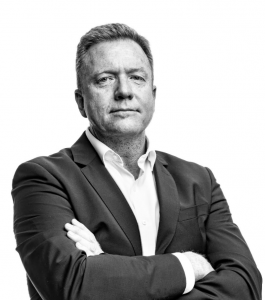Industry Insights: Hyperscale Data Center Demand in 2020 with Macquarie Data Centres’ Paul Christensen
Expected to garner USD 71.2 billion in revenue by 2022, the global hyperscale data center market is one of the most prolific technologies in the IT infrastructure world right now. The Asia-Pacific market, in particular, is set to see the highest bump in compound annual growth rate with an expected rise of 24% until 2022. With demand high and investment flowing, we dive deeper into what’s driving and shaping hyperscale data centers in 2020.Powering scale and expansionCloud giants like AWS, Google Cloud, Microsoft Azure, IBM, and Oracle Cloud know exactly what they’re looking for in the facilities that power their businesses. Hyperscale data centers are purpose-built to carry the fast-paced, highly-scaled, and security-driven demands of the world’s biggest service providers.In 2020, the key motivations for buyers of hyperscale services are security, scale, and choice, as well as sustainability, according to Paul Christensen, General Manager, Data Centre & Security Operations of Macquarie Data Centres.On the issue of scale, “It’s a question of timing…” he says, “…hyperscale businesses may want to expand now or in the future – they may expect linear growth over time – either way, they need the confidence that the provider can deliver on time consistently. Purpose-built data centers enable this ability to scale and expand extensively when it’s critical.” Hyperscalers are placing their supply chain into these sites so it’s paramount that providers can build on time to meet scalability needs.This goes for regional expansion too. Data center operators and their customers enter into long-term partnerships whereby service providers make heavy investments placing their infrastructure into the facilities where they can extend services to localized customers and verticals within the chosen region. Macquarie’s IC3 in Sydney, for example, will be developed to meet the needs of government entities – as well and major cloud and content providers.
Strengthening security measures
With worldwide spending on cyber-security forecasted to reach USD 133.7 billion, global companies are placing more value than ever on security measures. And, when it comes to business security, for data center operators, technical compliance is imperative.ISO 27001 standards are expected within hyperscale facilities; these standards bring information security under management control, examining the organization’s risk and enabling them to design a comprehensive suite of controls. SCEC standards are required for the evaluation of security equipment for use by Australian Government departments and agencies.Entwined in security considerations is the issue of data sovereignty. Paul Christensen explains that, “Working within a global economy means that hyperscale service providers must align with the standards of the countries they operate within. They need to know and put measures in place for where their data resides and where it’s stored and backed up.”
Offering choice and flexibility
The dynamic and changing needs of consumers are driving the growth of hyperscale data centers, particularly for major cloud providers. Their customers are looking for the right platform for the best fit and facilities are supporting this choice and flexibility.Much of this need for flexibility is being highlighted as hybrid and multi-cloud usage increases. Enterprises are consuming more network capacity and continuously moving traffic between on-premises and public cloud environments, as well as between multiple clouds. In fact, the global hybrid cloud market was valued at USD 45.70 billion in 2019 and is expected to reach USD 128 billion by 2025.“We’re starting to see collaboration between major hyperscale platforms with new types of deployments covering core and edge. This is driving the need for on-demand access to infrastructure where customers are, to ensure the high performance of workloads,” says Paul Christensen.This consumer demand gives data center operators valuable insight into what’s needed by their customers. Cloud providers are expanding their footprint to the edge to account for these trends. At the same time, they want the flexibility to support both commercial and government-based clients.100% availability and uptime within data centers as well as the ability to forecast capacity – and enable access to capacity expansion and scalability – means data center operators are able to meet the requirements for hyperscalers.Paul Christensen puts it down to design. He says, “We’re always thinking of faster and more flexible ways to build facilities. Technology is enabling us to do this. With pre-configured designs, we can scale much quicker, make capacity available, and offer this choice and flexibility for businesses.”
Evaluating efficiency and sustainability
In 2020, organizations are becoming increasingly more conscious when it comes to sustainability. Everything from data center design right through to power usage can and is being considered and monitored through a sustainable lens.Paul Christensen says, “Sustainability goes right back to systematic thinking; the way we operate – our inputs and outputs – are influenced by the way we think about how we consume, our processes, and our wastage.”There’s always going to be a playoff between IT load and facility load to operate. But, from a data center perspective, processes are put in place to ensure the best possible level of efficiency. Every piece of a plant is measured and tested before it’s incorporated into a design and greater access to technologies within the cooling and electric plants is allowing operators to ensure power efficiency earlier on in the development stage.Expected power utilization effectiveness (PUE) levels are being embedded into service provider contracts as companies become more aware of their carbon footprint and commit more heavily to reducing the environmental effects of their operations. Greater flexibility in the facility’s design means operators can enable optimum levels of efficiency at lower loads.As the hyperscale data center market continues to thrive in 2020, businesses are taking scale, security, choice, as well as sustainability into consideration – and facilities are being driven by this demand. To find out more about Macquarie Data Centres, visit their Cloudscene profile.
For sourcing and selling data center services, visit Cloudscene’s Marketplace.

Contributor – Paul Christensen, General Manager, Data Centre & Security Operations, Macquarie Data Centers
